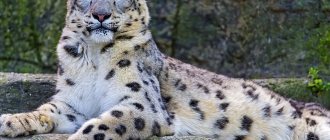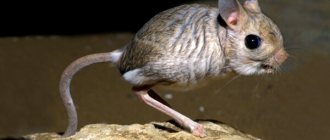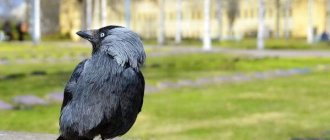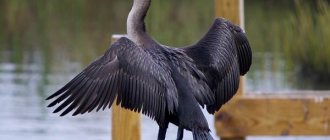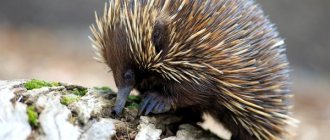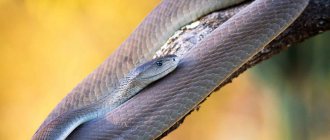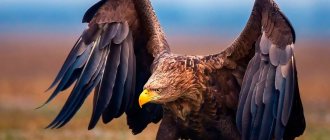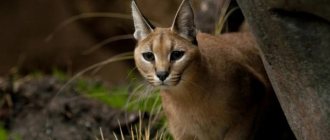Lynx diet
The unusually beautiful, graceful, majestic lynx is very much disliked by forest inhabitants. Why? Yes, because she is a predator, and too bloodthirsty. The lynx feeds on meat, and only fresh meat, and never eats carrion.
If a large animal becomes prey, and she could not eat it right away, she does not come to finish eating it. The animal's diet includes birds, small rodents, and hares. He will not deny himself the pleasure of hunting larger animals - sika deer, roe deer and even reindeer.
It enjoys the young meat of the cubs of such four-legged animals as elk, wild boar, and wapiti. You can also treat yourself to fish. If human dwellings are located nearby, he will not disdain animals from the yard.
The daily menu is about 5 kg of meat. And if the lynx is well-fed, it will never hunt for nothing. Its competitors in the field of nutrition are wolverine and fox. And if the first manages (not always) to drive away the breadwinner and feast on the obtained food, then the second is doomed to death. The lynx kills an uninvited guest, however, it will not eat it.
Hunting
With the onset of semi-darkness, the trot changes, vigor appears, and a surge of strength is felt. Under the cover of darkness, it carefully tracks its prey, listening and freezing. Or it will sit on a branch above the path that leads to a watering hole. But from the tree she never attacks the victim.
The predator does not give itself away by any movement. From the tree she never attacks the victim. The early morning hours, when the night has not passed and the day has not come, is the most favorite time when the forest cat enters the hunting path. Only the Canadian hunts during the day.
First, the trophy is tracked, then the lynx silently approaches the object and attacks with lightning speed. At the same time, he makes fairly long jumps.
The lynx does not pursue its prey for long; it chases after it, and after running up to 80 m, it stops the chase. The lynx kills its prey instantly; the sharpness of its teeth and claws is comparable, perhaps, to a blade. You can often see marks of claw sharpening on the trunks. Some peoples use lynx claws as a totem.
general characteristics
Lynx is a mammal of the vertebrate class, belongs to the cat family and is very similar to them in morphological and anatomical characteristics. Its main distinguishing features are a short thick tail, large triangular ears with tufts of long, coarse hair, and long fur on the sides of its round muzzle.
The predator inhabits a vast territory of the northern hemisphere, so its appearance and size vary greatly depending on the species and habitat:
Common or Eurasian. The largest species, body length reaches 100-120 cm, height at the withers 70-80 cm. Males are slightly larger than females, weighing 23-25 kg, sometimes individuals weighing up to 30 kg are found. The weight of the female fluctuates around 20 kg. The length of the predator's tail is 23-24 cm. The fur of this species of lynx is very thick; in winter, gray and light red shades with rare spotting predominate. In summer the color becomes brighter.
The East Siberian and Caucasian lynx are subspecies of the common lynx. The Caucasian is slightly inferior in size to its wild relatives, its body length is 80-100 cm, height up to 50 cm. The weight of the predator is from 10 to 15 kg. The lynx fur of this subspecies is rarer and smaller, the color is dominated by bright red shades with well-defined brown spots.
- Canadian. An order of magnitude smaller than ordinary, its body length is slightly more than 70-80 cm, the average weight of an adult is fixed at 9 kg. The animal's tail is short, no more than 17 cm in length. The lynx's fur is colored in gray tones, with small white splashes; sometimes there are ash-blue shades. The spots are few in number, not clearly expressed, and sometimes merge with the overall color. The fur on the belly is thick, lighter, sometimes gray-white. The fur on the back of the ears, at the end of the tail and along the edge of the whiskers is black.
- Redhead. The smallest representative among all species. Due to the lack of need to move through deep snow cover, it has shorter, thinner limbs and less massive paws. The tail of a lynx of this species has a distinctive feature from its other representatives - its color at the end is not pure black, but with predominant white spots. The body length of the animal does not exceed 80 cm, the height at the withers, depending on gender, is from 30 to 50 cm, the weight of an adult is 10 kg. The lynx's fur is not thick, relatively short, light brown in color, and gray on the belly. Dark, pronounced spots are abundantly distributed on the inside of the limbs and on the sides of the predator.
- The Iberian or Iberian lynx, which inhabits the mountainous regions of Spain and Portugal, is the smallest species, numbering just over 300 individuals. The size of the animal is slightly smaller than the Eurasian wild cat, its weight ranges from 12-17 kg. A distinctive feature from other species is the fur of the lynx. Its color is dominated by gray-brown shades and there are often bright dark spots throughout the surface, which makes it extremely similar to the leopard color.
The skeleton of the animal is typical of all vertebrates. The skull is wide, short, the area between the eye sockets is high, the nasal bones are large. The lynx is endowed with very powerful short jaws, the bite of which is fatal. An adult has 30 teeth - the fangs are long and sharp, used to hold and tear food, and the carnassial teeth (molars) are used to cut tendons and chew bones. The grin of a predatory jaw as a threat or defense looks terrifying.
Family ties and babies
With the onset of the last month of winter, the mating season for lynxes begins, and it lasts until the end of March. Males fight selflessly to take possession of the female. Their growls and loud meows can be heard throughout the area. The female goes with the winner.
She carries the cubs for two months. On the eve of childbirth, parents set up a den, a kind of delivery room. It is located either in a hollow tree 15 meters above the ground, or in rock crevices.
Usually two or three lynx cubs are born. In rare cases, up to five babies are born. Newborns are very small (up to 300 g). Two weeks after birth, kittens open their eyes.
Raising the offspring lies entirely with the mother; the father does not take part in this process. At three months, lynx cubs begin to follow their mother, and at five months they begin to receive lessons in independent hunting. One-year-old individuals enter adulthood.
Kinds
Lynx is a mammal that comes in several types:
Common lynx. This type is the most common. Most of the descriptions of the animals are presented above. At the moment, almost 90% of this species’ habitat is Siberia.
Canadian lynx. According to some zoologists, this is a subspecies of the European lynx. Based on the name, the habitat is Canada, although the cat is also found in the northern states of the USA, for example, in Montana and Idaho. Compared to the ordinary lynx, the Canadian lynx has a smaller body with a length of 48 to 56 cm. The coat color is also grayish-brown.
Iberian lynx. Habitat: southwest Spain. This is the rarest species, which is now mainly found in the Coto de Doñana National Park. Note that the entire lynx family is now listed in the Red Book . As for the Pyrenean variety, there are about 100 individuals left of these cats, and all necessary measures are now being taken to preserve their population.
Compared to the common lynx, the Iberian lynx has a lighter shade of fur, with pronounced spots, which makes it look like a leopard. The peculiarity of the animal's fur decreases in size with the onset of the winter months.
These cats are about 50 cm high, 80 to 90 cm long, and weigh 12–22 kg. Another difference compared to the European species is the narrower and longer jaw. Thanks to this structural feature, the bite of a predator becomes especially dangerous.
Red Lynx. US territory. Appearance: the fur is reddish-brown, with gray inclusions, the inside of the tail is marked with white (in other species this area is black). It is smaller in size than an ordinary lynx, weighing up to 6-11 kg. By the way, among this species there are melanistic lynxes, whose fur is completely black. These cats are commonly called panthers. You can recognize the animal by its long and large paws.
This species is found in many places:
- subtropical forests;
- hot deserts;
- marshy area;
- mountains.
Sometimes the red lynx can be found even in the suburbs. If the animal senses a threat, it will try to escape by hiding in a tree, where it will be very comfortable. The cat prefers those places of residence where there is practically no snow. The fact is that its paws are not designed to move on snow.
Siberian lynx. There are many cats of this species, however, only the Siberian lynx is found on the territory of the Russian Federation; this type of lynx in the photo is the most common. However, as a result of human activity, the cat population has decreased markedly.
Thanks to their unique structure, they thrive in harsh climates. In addition to the ability to climb trees, Siberian lynxes run fast, swim well, and jump far and high. Coniferous forests are the place where this species is most often found, although cats sometimes move into forest steppes.
Peculiarities
The domestic lynx differs from its ancestor in many qualities. The domestic specimen was produced by crossing a small wild animal with an ordinary cat. The only condition for this was the selection of a color similar to the natural color of the forest beauty.
The caracal is considered a domestic lynx. But it also requires careful care, certain conditions and constant care from the owners. A spacious enclosure is needed.
We must not forget that keeping a lynx within the walls of a house is not an easy task, and additional considerable financial costs will be required.
Particular attention should be paid to the diet: meat, fish, bones and no dry food. It is important to systematically comb the animal, since when licking the fur, the lynx can swallow it, choking on it.
Many people are interested in the question: is a lynx dangerous at home? It's up to you to decide: a wild lynx is a predator, an artificially bred one is also a predator, although its natural instincts are hidden quite deeply. And predators are always dangerous.
The lynx is the keeper of secrets and symbolizes truthfulness, impeccability, openness, silence and many other qualities of clairvoyants.
And if you choose the lynx as your totem, beware of deceiving people’s trust, watch your words, choose expressions with caution.
Determining the freshness of a trace
The lynx has excellent hearing, sees perfectly in the dark, and therefore leads an active lifestyle mainly at night and twilight.
In search of food, an animal can travel from 5 to 15 km, so tracks that are more than a day old are very likely to be useless for detecting the animal. A novice hunter or naturalist, in order to understand the difficult science of orienting by tracks, initially needs to compare his fresh print and the predator, take a photo for a detailed comparison. If there are practically no differences in these prints, then the animal may be nearby. To understand what yesterday’s footprint looks like, in the evening, before going into the forest, you should leave an imprint of your hand on the ground or snow, and study it thoroughly in the morning.
Determining the freshness of foot prints depends on many weather factors - rain, snow, frost, wind.
In frosty weather, on a dry, fluffy surface, the animal's fresh paw prints are loose, looking like shapeless pits. Around the trace depressions one can see a small amount of openwork snow that crumbled when the limbs were removed.
After a certain time, frost binds the edges of the mark with infusion; it smoothes out and becomes harder the more time passes. At an air temperature of -8...-12°C, prints harden within 20-30 minutes, at lower temperatures – after 10-15 minutes. Moreover, old foot prints covered with a strong crust can be lifted, they will have greater thickness.
In the warm season, tracks left by a lynx on the sand or ground become weathered, become dull, dry, and small cracks appear on them. If water from rain has accumulated in the paw print of a predator, this indicates that the animal has been here for a long time. If the lynx walked through the grass and it remains crushed, then the tracks are no more than an hour and a half old.
The novelty of a lynx's footprint can be checked by running a thin branch along the footprint. The branch will cut a fresh print (up to 1 hour) with ease; an old one (5-7 hours) will cut it, bending slightly. An imprint that is more than a day old will remain unchanged, but the branch will bend greatly.
The rate of deterioration of a trace is influenced not only by weather conditions, but also by the terrain - in open areas, prints fade and get swept away faster than in lowlands and ravines.
